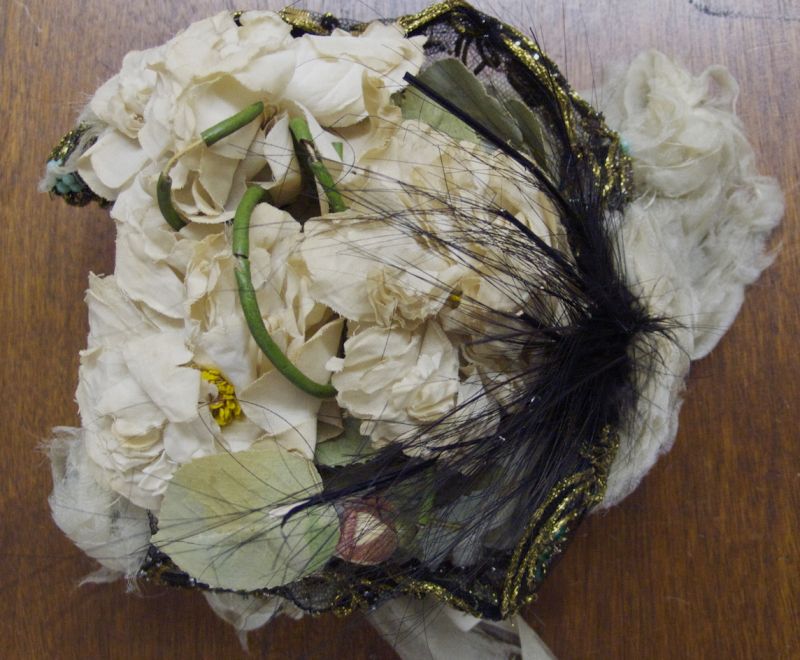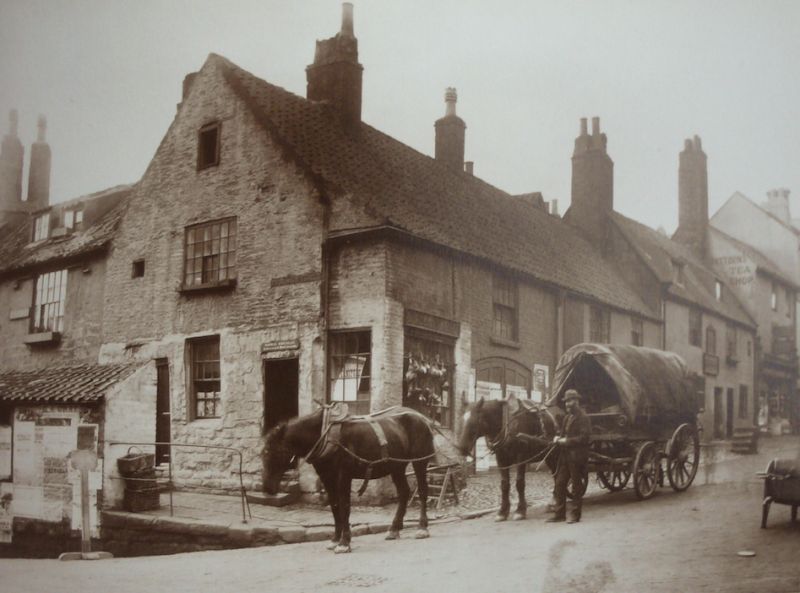ikfoundation.org
The IK Foundation
Promoting Natural & Cultural History
Since 1988


THE MISSES STANGOE
– Milliners in Late Victorian Whitby
Over time between 20 to 30 women worked in the millinery trade in the last two decades of 19th century Whitby, some as employed and others as apprentices or shopkeepers. The Misses Stangoe can be traced via censuses and regular advertisements in Whitby Gazette during twelve years, where it is possible to get a glimpse of their daily working life, what types of goods they had for sale and when apprentices were needed or any other event of importance took place. This small case study is part of a comprehensive study of the town’s milliners – published in the monograph Textile History of Whitby 1700-1914 – and here added with a few more details about these particular female shopkeepers’ situation.
-800x452.jpg) The Misses Stangoe needed apprentices for their millinery business in the spring of 1880 – notice in Whitby Gazette (Whitby Museum, The Library). Photo: Viveka Hansen.
The Misses Stangoe needed apprentices for their millinery business in the spring of 1880 – notice in Whitby Gazette (Whitby Museum, The Library). Photo: Viveka Hansen.Many small female businesses seem to have been working from home or in an adjoining shop judging by a comparison of census returns and directories. This circumstance also fits into the 41-year-old Ann Stangoe and the 35-year-old Dorothy living at 12 Flowergate, together with the older sister Catherine (43) as Housekeeper, their retired father (88), a grandson (8) and a 16-year-old servant as listed in the 1891 census. In the 1881 census, only the youngest sister, Dorothy (26), of the two milliners, was present, but the family at that time already lived at 12 Flowergate.
The sisters repeatedly advertised through appeals for apprentices in the style of ‘Apprentices Wanted’. The Misses Stangoe of Flowergate ran a ‘Millinery Establishment’ from at least 1880 to March 1892, when they were on the point of closing their business; they also sold corsets and other clothing accessories. The many tourists in the coastal town were, without a doubt, an important part of their clientele, judging by the spring and summer advertisements in Whitby Gazette.
 Models like this could probably be purchased or ordered at the Misses Stangoe’s millinery in the 1880s. Hats during this period were often very small, their variations created with considerable imagination using added fur, feathers, hair, straw or velvet etc. They were designed to perch on top of the hair and to be secured under the chin with a ribbon. (Whitby Museum, Costume Collection, L 11). Photo: Viveka Hansen.
Models like this could probably be purchased or ordered at the Misses Stangoe’s millinery in the 1880s. Hats during this period were often very small, their variations created with considerable imagination using added fur, feathers, hair, straw or velvet etc. They were designed to perch on top of the hair and to be secured under the chin with a ribbon. (Whitby Museum, Costume Collection, L 11). Photo: Viveka Hansen.Bulmer’s directory of 1890 gives a detailed additional list of milliners and dressmakers who either worked on their own or employed other similar workers. The directory marks their shops or workshops ‘d.’ for a dressmaker or ‘m.’ for a milliner, while several names are unmarked to indicate both activities. In this list of 27 establishments. 'Stangoe Misses Cath., Annie, and Dorothy, 12 Flowergate’ was included and given proof that the oldest sister Catherine, listed as housekeeper in the census one year later, also took part in the daily run of the family business.
 This 1880s photograph – contemporary with the Misses Stangoe’s millinery – gives a good impression of the daily life on Flowergate in Whitby. It has not been possible to find a photograph of their shop, but the sisters’ worked and lived a bit further down on this side of the road. (Photo: Frank Meadow Sutcliffe).
This 1880s photograph – contemporary with the Misses Stangoe’s millinery – gives a good impression of the daily life on Flowergate in Whitby. It has not been possible to find a photograph of their shop, but the sisters’ worked and lived a bit further down on this side of the road. (Photo: Frank Meadow Sutcliffe).The Misses Stangoe’s last advert was placed on March 15th, 1892. Despite the detailed information, it has not been possible to clarify the reason for their hurry to close the business.
‘Millinery Establishment
Misses Stangoe will offer their Entire Stock
For Sale as below
All the best corsets, piece velvets, plushes, silks, satins, ribbons, laces, flowers, feathers
&c. Marked in red ink at thirty per cent under cost price: and other stock of all
kinds much below that namely evening dress
and tea gown trimmings and many things suitable for bazaar work.
All must be cleared out within a very short time.
Terms Cash.
Sale to Commence Saturday 19th March 1892
12 Flowergate
The Premises to Let. with early possession. – Apply W. Harrison, Esk House.’
Sources:
- Hansen, Viveka, The Textile History of Whitby 1700-1914 – A lively coastal town between the North Sea and North York Moors, London & Whitby 2015 (pp. 111, 118, 195 & 256-57).
- Whitby Gazette, 1880-1892 (Whitby Museum, Library & Archive).
- Whitby Museum, Costume Collection (research of hats).
More in Books & Art:
Essays
The iTEXTILIS is a division of The IK Workshop Society – a global and unique forum for all those interested in Natural & Cultural History from a textile Perspective.
Open Access essays, licensed under Creative Commons and freely accessible, by Textile historian Viveka Hansen, aim to integrate her current research, printed monographs, and earlier projects dating back to the late 1980s. Some essays feature rare archive material originally published in other languages, now available in English for the first time, revealing aspects of history that were previously little known outside northern European countries. Her work also explores various topics, including the textile trade, material culture, cloth manufacturing, fashion, natural dyeing, and the intriguing world of early travelling naturalists – such as the "Linnaean network" – viewed through a global historical lens.
For regular updates and to fully utilise iTEXTILIS' features, we recommend subscribing to our newsletter, iMESSENGER.
been copied to your clipboard




– a truly European organisation since 1988
Legal issues | Forget me | and much more...
You are welcome to use the information and knowledge from
The IK Workshop Society, as long as you follow a few simple rules.
LEARN MORE & I AGREE







